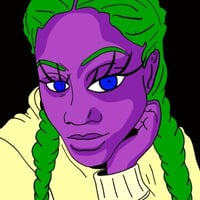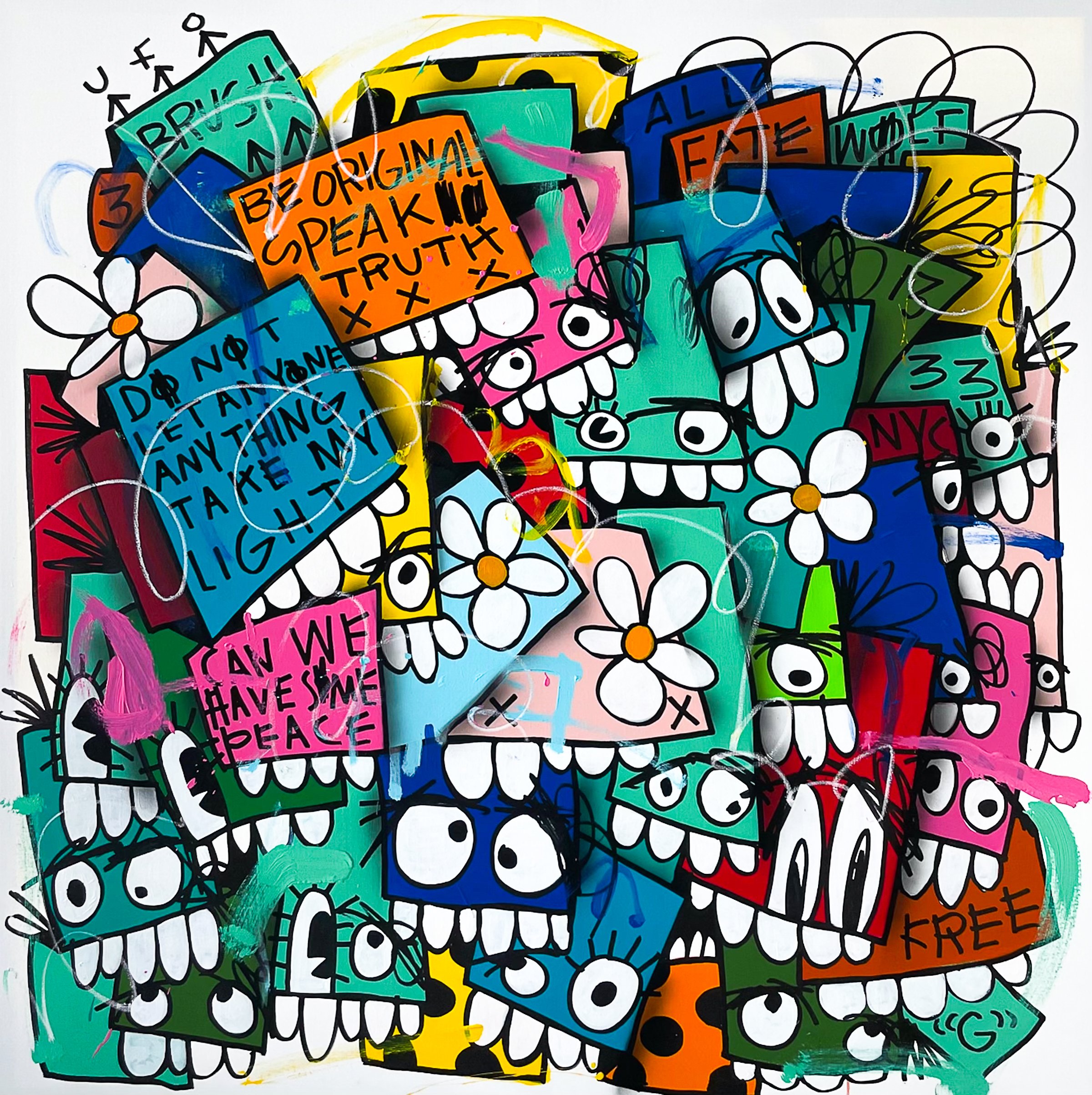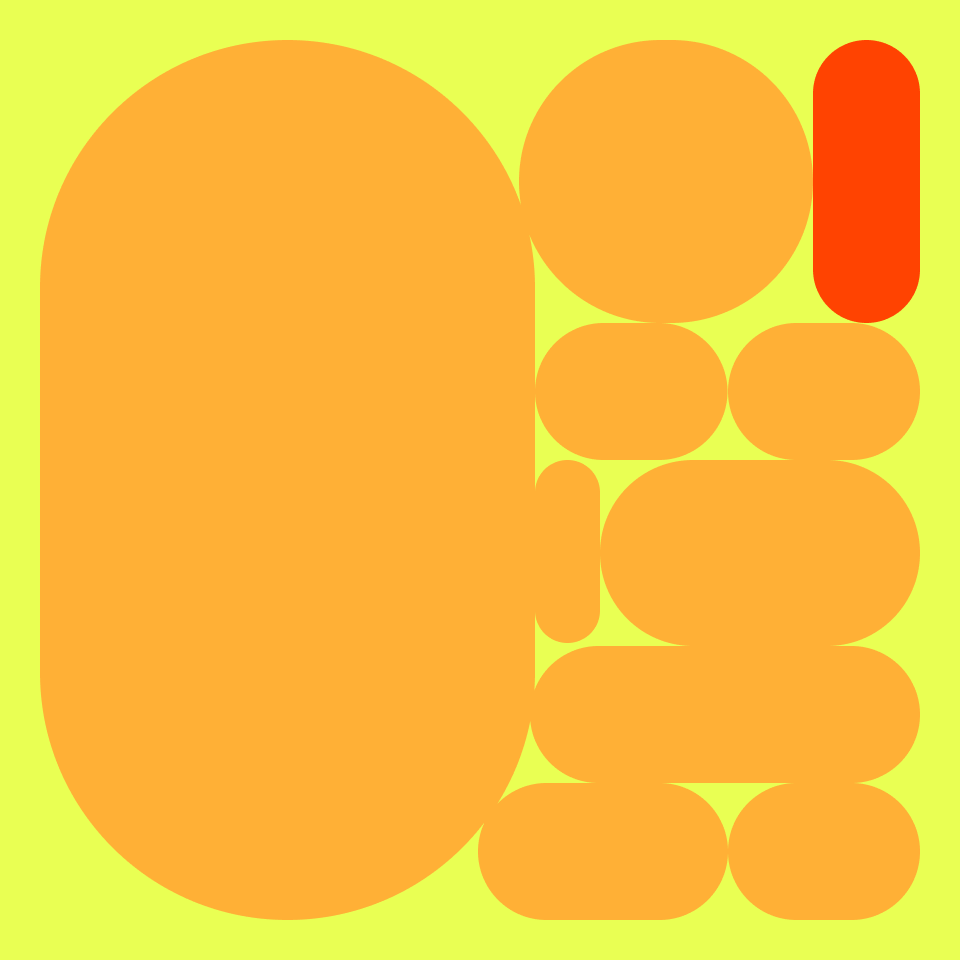AN INTERVIEW WITH PAULIUS UZA
Paulius Uza is an engineer, investor, and NFT collector. He was the first Lithuanian to mint an NFT. He founded Forever Lands, a curated gaming experience which allows anyone to invest in fractionalized art on the blockchain. Paulius is also the founder of the Artifact SuperRare Space. To be accepted into the Space, artists must apply to join Artifact's leaderboard; after they're accepted, they can gather votes from community members to move up in the rankings. Paulius shares his experience building Artifact with Linda Dounia and breaks down the ecosystem of tools he’s built around the Space to enable its success.
Linda Dounia: I understand that you have a long standing relationship with SuperRare, even prior to establishing your Space. How did it come about?
Paulius Uza: It all started with Forever Lands, collecting art mostly from SuperRare. Our goal was to create a vault with important works from the web3 art movement and fractionalize it for our players. We partnered with SuperRare to onboard new artists we were discovering while collecting works, and that’s how our collaboration with the platform started. Once SuperRare Spaces were launched, we thought it was the right product to streamline this process and decided to apply to the Space Race.
LD: What would you say sets Artifact apart as a Space?
PU: We are a little bit different in terms of how we approach being a Space Operator. We are building a brand around our curation and are focused on building our own back-office tools in the background to run it effectively. We have our own website where people can see our latest releases, apply to join the Space, and vote on applications to feature in the leaderboard. We also have a YouTube Live Stream and a company that builds hardware and software for NFT screens. Finally, we work with a network of physical galleries. For us, it’s really about where we can add value on top of the Space infrastructure for artists we work with.
 "Night Country" by Chiara Alexa on SuperRare. Presented by ARTIFACT.
"Night Country" by Chiara Alexa on SuperRare. Presented by ARTIFACT.
LD: I learned that you’re not just building these tools for yourself, but potentially also for all Space Operators. Can you tell me more about that?
PU: We actually recently filed two proposals to the SuperRare DAO to make an open source version of the tooling ecosystem we’ve built so that it is accessible to all other Space Operators. One proposal is a content hub, or a CMS, that would make it much easier for Space Operators and SuperRare to collaborate. The other proposal is the back-office that supports running a Space.
LD: That would make everyone’s job a lot easier, both on SuperRare’s side and on the Space Operators’ side. I can’t imagine it’s easy for anyone to deal with growing Spaces without tools like that.
PU: Exactly. The idea is that artists are ultimately a shared resource for all of us. None of us have exclusivity over artists in any way. So it makes sense for us to have equal information when it comes to context around artists. Maybe an artist minted something with us and another space, but were also onboarded to SuperRare directly and have works that sold on the platform independently of Spaces. Or maybe they were selected to take part in an exhibition or have been featured by SuperRare. We want to pull that data in one place and give SuperRare and Space Operators access to that data. It creates a holistic picture of that artist’s journey which is valuable context for collectors.
LD: You seem to have an ecosystem view of Spaces, and advocate for more collaboration between Space Operators as well as SuperRare. What informs that?
PU: I recognize that Spaces are in competition for the attention of collectors, but I think it can be a healthy competition. Right now, there are two technically capable spaces out of 30. I would like to see that number grow, so more Spaces can participate more effectively. We think that by making the tools we use available to everyone, we can get there. In general, there are so many ways we can grow the Spaces product and develop new business models and tools around it. There are many opportunities for everyone to build and share, which will make this ecosystem more dynamic.
 "i am none." by Benji Connell on SuperRare. Presented by ARTIFACT.
"i am none." by Benji Connell on SuperRare. Presented by ARTIFACT.
LD: That’s a very interesting outlook because it builds on the idea of decentralization, which is the central motivation for creating Spaces.
PU: Exactly. If we take the example of the CMS proposal, we could create whole economies around it. Imagine if there was an allocation of $RARE tokens for writers in our ecosystem who review artists and exhibitions. Space Operators might not have enough time to produce that content but freelance writers could for a certain amount of tokens. I would gladly do that and display it on our website because it creates context for our artists that can be valuable to collectors. That’s just an example of what’s possible.
LD: I can’t imagine you’re doing all of that building on your own, on top of curating for your Space.
PU: We have a team of curators who had experience with building the vault for Forever Lands. We carried that over to Artifact. With Forever Lands, we were a ‘collector’ and now we are serving more of the role of ‘gallerist,’ so the relationship we have with artists has changed in that way. We are also onboarding a lot of artists at the moment but are trying to do it in a mindful way. For example, we grant limited access to minting at first and take the time to observe how a particular artist navigates the Space. We continue to work with the ones who show potential and give them more freedom in Space. We’ve also had to off-board some artists whose vision didn’t ultimately align with ours.
LD: What do you look at when evaluating which artist to work with?
PU: We favor artists that don’t try to game the system. For example, someone who’s trying to maximize their views on SuperRare and will toggle auctions on and off every few hours to get more attention is someone we’re not likely to keep working with. We want to see that they are focused on their practice, care about how they present themselves as well as their bodies of work, and are also thinking about the market more holistically, like their long-term pricing strategy or release mechanics for example. We try to identify artists who really look at this from a strategic perspective and can make the most out of their collaboration with us.
 "Milo $ 3 'Blind Trust'" by Milo Redwood Art on SuperRare. Presented by ARTIFACT.
"Milo $ 3 'Blind Trust'" by Milo Redwood Art on SuperRare. Presented by ARTIFACT.
LD: There are hundreds of artists who are currently applying to join Artifact. What are some of the things that you would say contribute to your success as Space specifically with artists?
PU: There are two factors in my opinion. The first factor is that we put a lot of effort in building the tools that add value to artists in our Space, from a product perspective. We are constantly asking ourselves, what can we offer, improve, or automate? The percentage we get from artists’ sales goes to more than just social media promotion. It actually helps bring these tools to life. We are also focused on building relationships and partnerships behind the scene to broaden artists’ reach and add even more value to them beyond what we build ourselves. Much of this work takes a lot of development effort but we're trying to push them out as soon as we can. When something is working, we deploy it, test it with the market, and use the results to improve it. The second factor is that we’ve developed a strong taste and understanding of the market. So we are confident that the works we curate will do well over time, even if the artist might not yet be well known in web3. From our work with Forever Lands, we have a track record of helping artists get to a level where they can afford to keep creating. One of our goals is to help more artists professionalize.
LD: Has the bear market affected your views or approach at Artifact?
PU: I don’t think 1/1 art, which is what we are focused on, fluctuates in value, even in a bear market. However the artist prices the work is ultimately the value of the work. So the market may change, but the value of the artwork remains at the artist’s discretion, which in the long term makes it a safer investment. The collectors we work with understand that and have become great supporters of what we do. We have seen the evidence of this. When we feature lesser known artists on our Space, and they get the attention of collectors, you’ll find that their minted works outside of our platform will also get attention. Many artists have sold out their minted works after having been part of an Artifact release.
LD: What are three things that you think Artifact does especially well and other Space Operators could benefit from considering?
PU: First, having a solid structure to handle operations is key for us. This structure makes it easier to onboard artists, share relevant documentation with them about the Space, set expectations for features, and give them the chance to know how to make the most of their involvement. Second is investing in building the technical capabilities of artists. Web3 can be unsafe to navigate without the proper knowledge of common traps, for example. Finally, I would say developing a strong approach to curation is important. We make sure to uphold our curation standards and carefully evaluate the artists we might want to work with. Our following has come to know us for these standards so it’s important we keep them in focus while curating exhibitions.
 "Eve #1" by Amirrahatiarts on SuperRare. Presented by ARTIFACT.
"Eve #1" by Amirrahatiarts on SuperRare. Presented by ARTIFACT.
LD: What are some things that you've learned from being a Space Operator? How does that inform the future of Artifact?
PU: I think the main thing is that there's a lot of time consuming work, especially because at Artifact, we strive to stay close to artists we work with. We have developed personal relationships with them, and it doesn’t seem to be scalable at the moment. So we are trying to figure out how to be more sustainable on that front in the future. Another thing I learned is that there is a real need for the services we offer. Some artists don’t want to create and do their own promotion. For those artists, a gallery model works well. We can take it off their hands and promote their work on their behalf and connect them with collectors who value their work.
LD: Speaking of that last part, finding collectors, what’s that been like for you? What are some tactics you’ve used to build your collector community?
PU: We launched our new application recently, and it’s gamified. We have a leaderboard of top hundred applications that we select from. In order to be in the top 100, artists have to mobilize their community to vote for them. We're onboarding around 300 emails per day at the moment and get an average of 10 applications a day. We think this creates a market effect which increases the visibility of artists. I am confident that we’ll soon reach the thousands. What’s interesting here is that from the people voting or observing the voting, there are collectors. So by gamifying our application, we’ve essentially created a situation where collectors can get context about who they might collect from.
LD: Do you have any parting notes? Anything you’d like to share with other potential Space Operators?
PU: I think everybody's sort of trying to run their own thing and, long-term, there are better ways for us to reach our goals. We need to talk to each other more and share our experiences and what we learn. I hope that the content hub proposal we’ve made is how we start. We're open to collaborating more with other Spaces and combine all our efforts to better serve artists.




